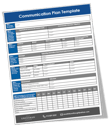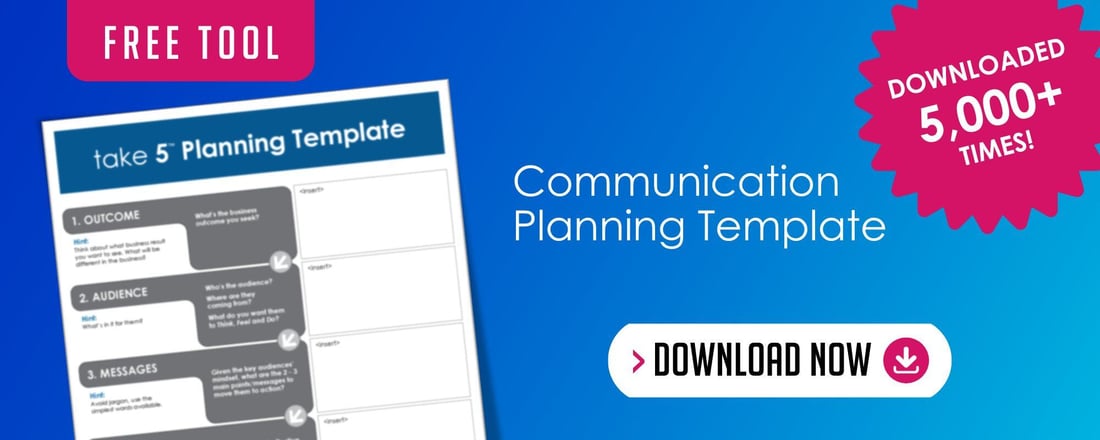Communication: The Key to Workplace Vaccination Policy Adoption

As more people gain access to the COVID-19 vaccination, employers are assessing their virus-related policies to ensure the guidelines they’ve established are appropriate for today’s “new normal” and the public health tools that are available. Our point of view is that every employee should be vaccinated to ensure a safe work environment. While timely policy updates are key to maintaining a safe workplace, employee communication is critical to adoption.
5 Steps to Successfully Sharing Timely Policy Updates with Employees
To support the successful deployment of updated or new COVID-19 policies within a company of any size, we’ve identified the following steps:

Gather the facts about your company’s policy process and execution of the final decision.
Start by meeting with those involved in creation and approval of company policies, including members of the leadership team, human resources, legal, regulatory affairs, and risk management. Now is the time to ask the questions that employees at all levels within the organization will soon be asking—the 5 Ws (who, what, when, where, why) and the all-important H (how).
- Who does the policy apply to?
- What is the process for employees to secure and report that they’ve received the vaccine?
- What is the process around exemptions or for those who opt not to get vaccinated?
- When do employees need to submit documentation around their vaccine status?
- Why did the company decide to take this approach to the policy?
- How will the company monitor policy adherence or identify those who qualify for any vaccine-related incentives?
In addition to talking with the policy decision-makers, you might also consider gathering data from another stakeholder group: employees. We’ve found that results from a company-wide survey to gauge your workforce’s perceptions and knowledge around COVID-19 vaccines are proving helpful in completion of the subsequent steps.

Create a communications plan and support tools grounded in consistent and timely messages.
This is one area where tactics can vary greatly, but the need is absolute. Your communications also must factor in any interim guidelines concerning masks and social distancing that may remain in place for the foreseeable future.
One of the most important elements is establishing a clear, designated process to field questions and concerns. More than just sharing a message, this is where education campaigns become a cornerstone to your strategy. If you opted to conduct an employee survey as mentioned in Step 1, you’ll be able to identify gaps in knowledge and areas of concerns so that communications are targeted to directly address these specific needs.
Of course, issuing a one-and-done announcement is rarely an effective approach. The best communications plan is consistent with messaging and cadence, but diverse when it comes to channels and resources.

Enable ongoing two-way communication and adjust, as appropriate, based on employee feedback.
Just as an employee survey may be a helpful feedback mechanism to inform communications planning, ongoing dialogue with employees throughout implementation is necessary to maintain engagement and identify any areas of potential concern or confusion that need to be addressed.
Tactics here may include issuing pulse surveys as you reach key milestones in the action plan; holding interactive town halls to allow for real-time, candid conversations; providing people managers with tools to collect consistent, actional feedback from their teams during huddles and meetings; and creating accessible vehicles for employees to share their questions and concerns in a manner that is safe and easy for them.
The golden rule is follow-up. Make sure employees feel heard and that you close the loop on questions. Gathering feedback and encouraging conversations can actually backfire if employees feel like what they have to say isn’t taken seriously by leaders. That is why ongoing communications (vs. a one-time issuance of news) is critical for complex topics that cross over legal, ethical and personal boundaries.
 As you plan how you'll communicate your organization's workplace vaccination policy, develop your communication plan with a step-by-step guide. This easy-to-use Word doc template is designed to help you develop your communication plan and align it with tactics that'll drive results.
As you plan how you'll communicate your organization's workplace vaccination policy, develop your communication plan with a step-by-step guide. This easy-to-use Word doc template is designed to help you develop your communication plan and align it with tactics that'll drive results. 
Maintain employee engagement by encouraging leaders to celebrate milestones toward the return to “normal.”
Change is hard, especially when it is thrust upon us by outside forces (such as a global public health crisis). That’s why it is important to take a moment to acknowledge even the small wins. From a communication standpoint, this starts by coordinating with leaders to determine what success looks like (e.g., return to work percentages / implementation of a hybrid work model, X percent of the workforce vaccinated by X date in 2021, etc.) and sharing updates on progress toward that goal via communications channels established in Step 2.
Remember, this is a marathon, not a sprint. Remind leaders that they shouldn’t wait until the end to celebrate success. Instead, consider identifying milestones along the way when you can recognize momentum while thanking those who have helped to reach that point. This can range from employee spotlight articles on the intranet sharing personal return-to-work or vaccine stories to a team huddle where managers give out “I Got Mine” stickers and express appreciation for participation or team members take a few moments to share details about why their new hybrid office arrangement works for them. This doesn’t need to involve extreme pomp and circumstance, but rather should focus on leaders conveying their sincere appreciation for the commitment their teams continue to show.

Measure outcomes and assess future needs.
Anytime you launch communications around a new initiative or implementation of a new process, it is important to identify ways of measuring outcomes in concrete terms so you can make adjustments, as needed.
At its highest level, the measure of success in the case of a vaccine policy would likely be the percent of employees who receive vaccinations, but there are important measures in addition to that outcome—not the least of which is the percent of employees who feel positive about the workplace policy on vaccinations and their employers’ support of good health. Also, look at your communication vehicles and see where you might measure engagement through views and click throughs. Refer to the two-way communication channels to determine effectiveness of response and level of interest.
At the end of the day, measurement is about improvement, so make sure you look for opportunities to identify and share both best practices and lessons learned for future planning.
Have you identified a group of employees who are particularly influential within the organization? How might you engage them in an ambassador program to help advance communication around your company’s COVID-19 vaccine policy?
—Debbie Field Debbie is Vice President with The Grossman Group where she provides an array of internal, executive, and change communication solutions through strategic communication planning and delivery. She has worked with a range of organizations in healthcare, biotechnology, and health information technology, including Novartis, Medtronic, NYU Langone Health, Kaiser Permanente, Oracle Health Sciences, St. Jude Medical, and Texas A&M Health Science Center, to name a few. With expertise in the areas of public health and infectious disease, Debbie led crisis communications efforts for the State of Texas and the Governor’s Office during the 2014 Ebola outbreak.
Debbie is Vice President with The Grossman Group where she provides an array of internal, executive, and change communication solutions through strategic communication planning and delivery. She has worked with a range of organizations in healthcare, biotechnology, and health information technology, including Novartis, Medtronic, NYU Langone Health, Kaiser Permanente, Oracle Health Sciences, St. Jude Medical, and Texas A&M Health Science Center, to name a few. With expertise in the areas of public health and infectious disease, Debbie led crisis communications efforts for the State of Texas and the Governor’s Office during the 2014 Ebola outbreak.
As you navigate communicating your new or updated workplace vaccination policy, be more purposeful in your communications with this 5-step method. Click the image below to download your copy of this free tool—Take 5™ Planning Template.


Comments on this post